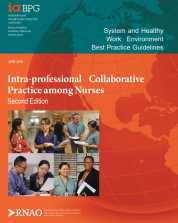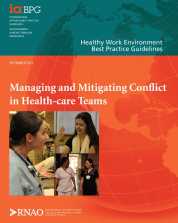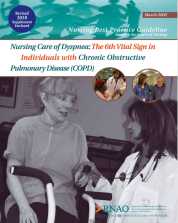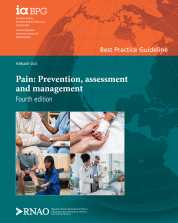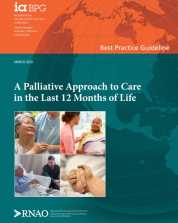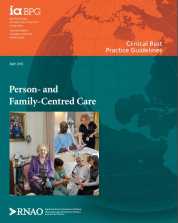The purpose of this best practice guideline (BPG) is to provide best practices for tobacco interventions for nurses and other health-care providers across all care settings, with evidence-based recommendations related to assessment and interventions for adults who use tobacco.
The purpose of this best practice guideline (BPG) is to strengthen collaborative practice among nurses, because effective collaborative practice is essential for working in health-care organizations.
The purpose of this best practice guideline (BPG) is to manage and mitigate interpersonal conflict among healthcare teams with the view that while some conflict is preventable, healthy conflict can also be beneficial.
The purpose of this best practice guideline (BPG) is to address the nursing assessment and management of stable, unstable and acute dyspnea associated with COPD.
The purpose of this best practice guideline (BPG) is to provide nurses, the interprofessional team and caregivers with evidence-based recommendations for the provision of oral care for adults (18 years of age and older) that will:
• promote an interprofessional approach to providing oral care,
• enhance the delivery of oral care interventions, and
• ultimately lead to positive oral health outcomes for persons.
The purpose of this fourth edition guideline is to provide nurses and the interprofessional team with evidence-based guidance for the prevention, assessment, and management of all types of pain across the lifespan.
This best practice guideline (BPG) provides evidence-based recommendations to nurses and the interprofessional health team who support adults experiencing the last 12 months of a progressive life-limiting illness, and their families and caregivers.
This guideline promotes evidence-based practices to help nurses and members of their interdisciplinary teams become more adept at practising person- and family-centred care. This evidence-based approach, combined with a perspective that recognizes the place of the person at the centre of health care, will improve individuals’ experience of and satisfaction with the care and services provided within the health system.
The purpose of this best practice guideline (BPG) is to provide evidence-based recommendations that promote and sustain the undergraduate nursing student’s application of knowledge to practice in a variety of clinical learning environments. The guideline explores the relationships among and between students and nursing educators, nursing staff, preceptors and diverse health-care team members, and it considers their influence on the quality of practice education, professional socialization and nursing excellence.
The purpose of this guideline is to provide nurses, members of the interprofessional team and other collaborators (i.e., administrators and policy-makers) with evidence-based recommendations for risk assessment, prevention, and treatment of pressure injuries.

